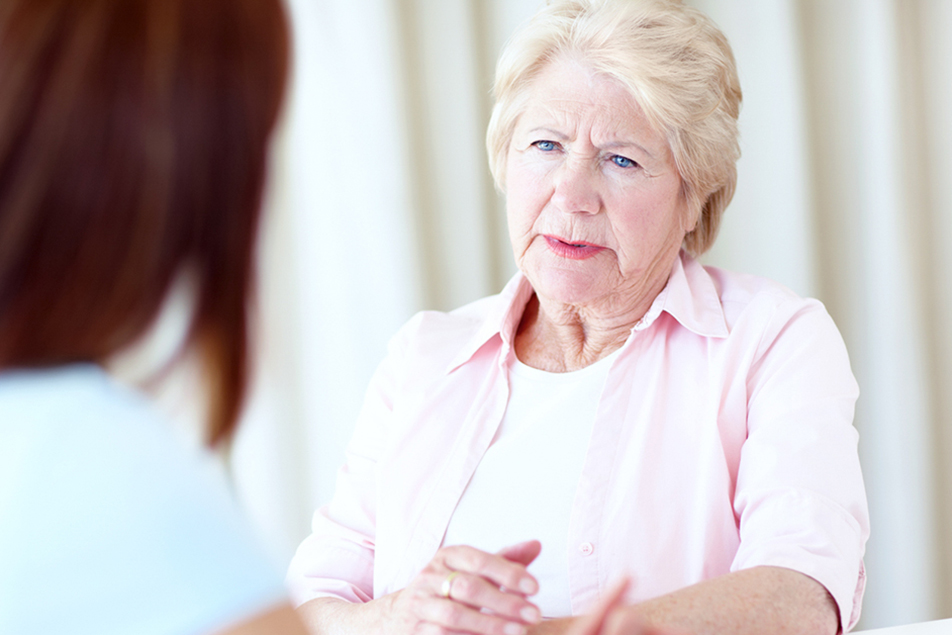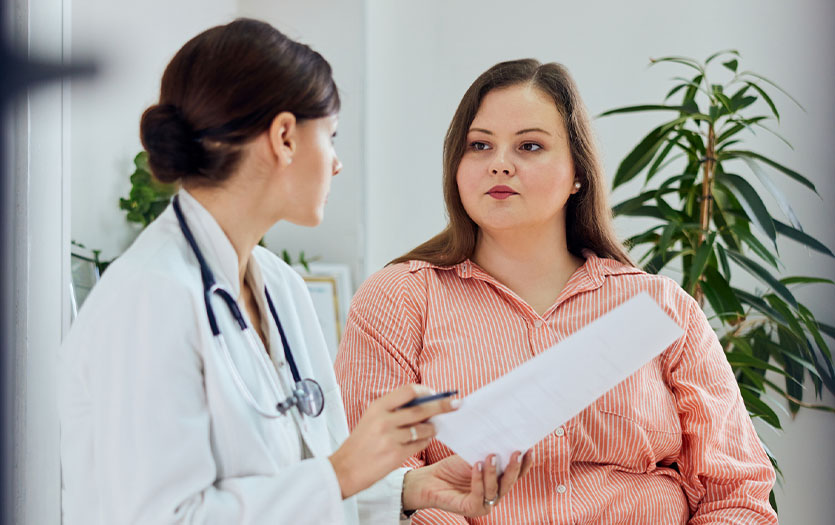Many of the patients Anette Lane, MD, sees at Parkview Physicians Group – Family Medicine in Huntington are over 60. She frequently gives them a familiar warning: If you want to stay active and independent, get up off the couch and keep moving! Dr. Lane shares with us the typical “wake-up” scenario she describes for her patients, along with the basics of what she wants seniors to understand about the sneaky disease of osteoporosis.
The scenario.
Mary is lying on her bedroom floor, unable to get up. She is 70 years old and always thought that she was healthy. Last night, when she got up to go the bathroom, she fell and could not get to a phone. Since the death of her husband, she has been living by herself. Hours go by before her daughter comes by and the ambulance takes Mary to the hospital, where she is found to have a broken hip.
Unfortunately, a lot of seniors find themselves in this type of situation. In this scenario, Mary didn’t realize she had osteoporosis, which caused her broken hip.
On a downward slope.
Osteoporosis is a silent disease; you cannot tell you have it until you break something – typically, a hip, spine or wrist. After age 25, your bone mass is on a downward slope. Unless you work on maintaining it, you will steadily lose bone mass, and then your bones can break more easily. Sometimes a break happens as the result of a fall; other times, the bone breaks first and then you fall.
Did you know men get osteoporosis, too? Women are affected more than men since bone loss happens more quickly after menopause, but men are actually more likely to die after they break a hip. And while it is recommended that all women over age 65 get screened for osteoporosis, the United States Preventive Services Task Force - a government organization which puts out guidelines for doctors - recommends against screening men.
Different factors can put you at risk for osteoporosis, even when you think you are healthy, so talk to your family doctor about your bones.
Educate yourself.
Why is it important for you to know more about osteoporosis?
1. This disease is very common. Chances are, you may either know somebody who has broken their hip, spine or wrist, or have had a broken bone yourself. Half of all American women over 50 are at risk of breaking bones. They either have osteoporosis or osteopenia (the stage before osteoporosis). While you are at higher risk of breaking bones if you have osteoporosis, most broken bones actually happen in people with low bone mass (osteopenia) - since a lot more people have that condition.
2. It causes a lot of disability and even death. After breaking a bone such as a hip, most people are never the same again. They have chronic pain, and are unable to walk or not able to walk as well as before, requiring them to move to a nursing home facility. Some do not survive the broken bone.
Twenty percent of seniors who break a hip die within one year. One broken bone means more broken bones, since the bones are brittle and break easily. So unless you do something about it, it is very likely that you will break another bone, leading to more pain and suffering.
3. It is expensive. Counting hospital stays, surgeries, office visits and nursing home visits, osteoporosis costs almost $19 billion in related costs every year.
4. It is preventable and treatable. You do not have to end up in a wheelchair!
Take action.
What can you do?
1. Get informed: Talk to your family doctor about your risk for osteoporosis and what you can do to prevent it.
2. If you are a woman over 65, get a DEXA scan. This quick, completely painless type of X-ray will give you and your doctor information about your bone density so together, you can come up with a plan for your bone health.
3. Make sure you get enough calcium and vitamin D. Your bones need these building blocks to stay strong. Men over 50 should get 1000 mg per day, and women should get 1200 mg per day. It is better to get your calcium from food, but if you just cannot get enough from your diet, take supplements. It can be hard to get enough vitamin D from your diet, so most seniors should take a vitamin D supplement. Ask your family doctor what amount is best for you.
4. Work on muscle-strengthening. This is essential, and it’s never too late to start. Exercise is beneficial at any age. Do muscle-strengthening exercises at least twice a week. Find out what programs are available in your area, or exercise at home. Building muscle helps your balance and reduces falls, but also keeps your bones healthy.
5. Talk to your family doctor about other steps you can take to reduce falls in your home.
6. Stop smoking (it causes osteoporosis) and avoid excessive alcohol intake.
Read more on prevention.
Treating osteoporosis with medication.
For people who have brittle bones, taking all of the steps above may still not be enough. If you have increased risk of breaking bones, talk to your family doctor about medication to strengthen your bones. Protecting your bone mass can, prevent pain, disability and death, in some cases, from broken-bone injuries. Osteoporosis medications are typically taken for a period of five years. Don’t forget that you still need to take your calcium and vitamin D because these medications cannot work without the building blocks for bone creation.
There are several different medications available: some pills, some injections. Your family doctor can help you figure out which is best for you.
Sources:
National Osteoporosis Foundation, NOF.org: What is osteoporosis and what causes it
Diagnosis and Management of Osteoporosis - American Family Physician
Osteoporosis in Men - American Family Physician
AAFP Endorses ACP Guideline on Treating Osteoporosis





